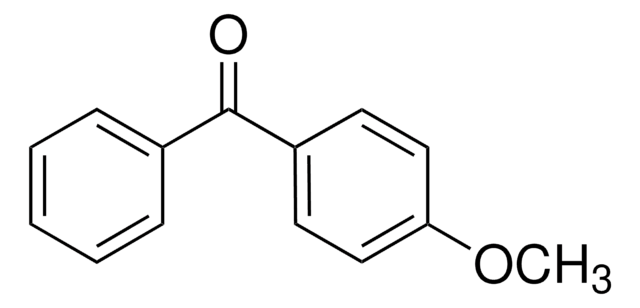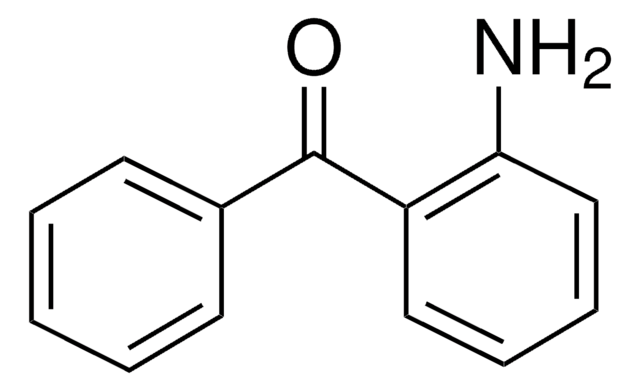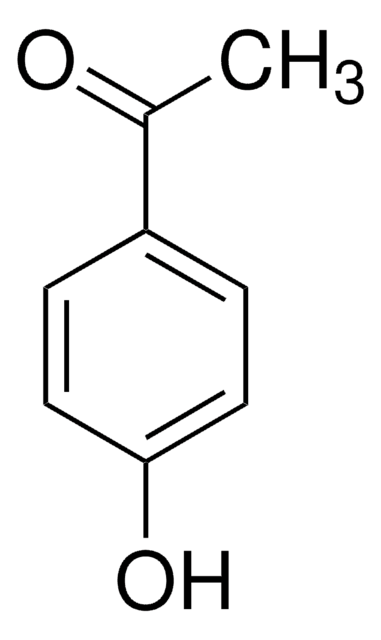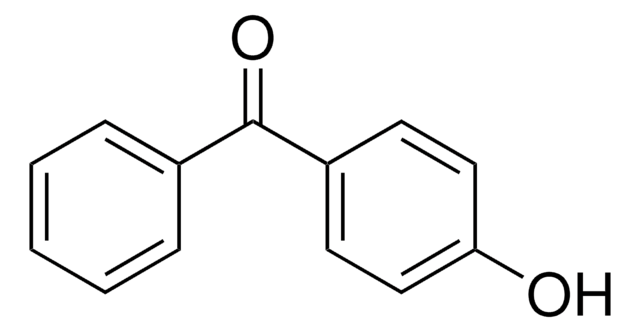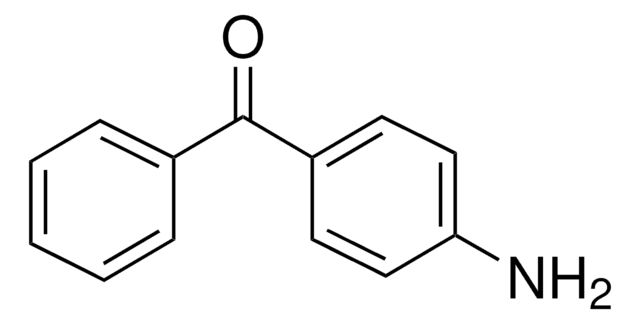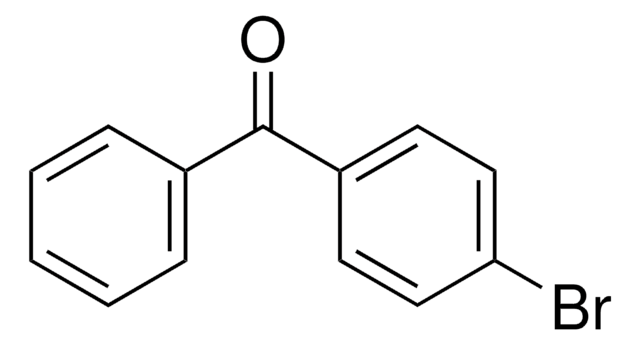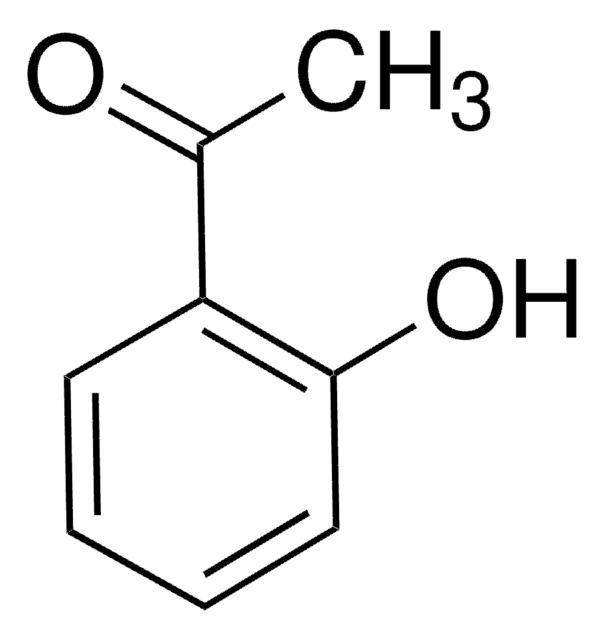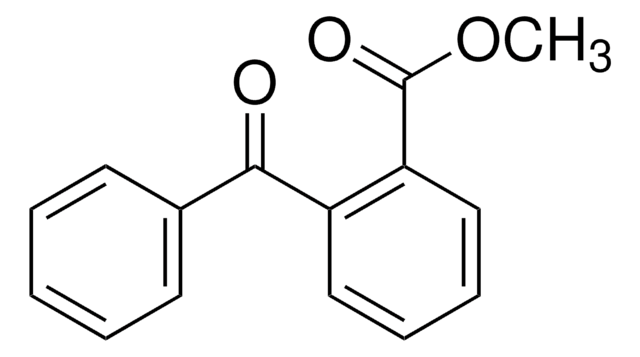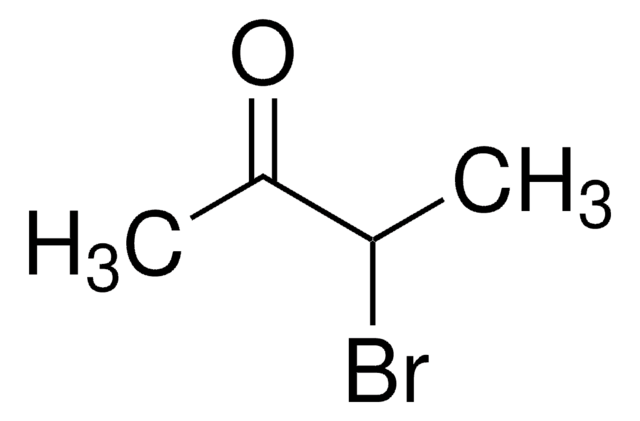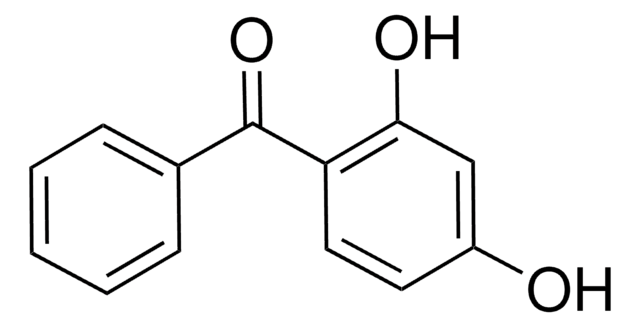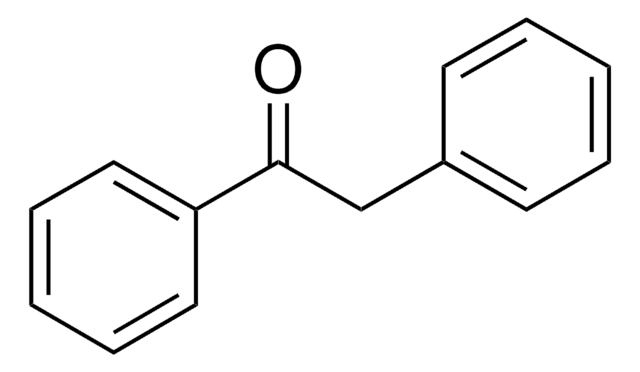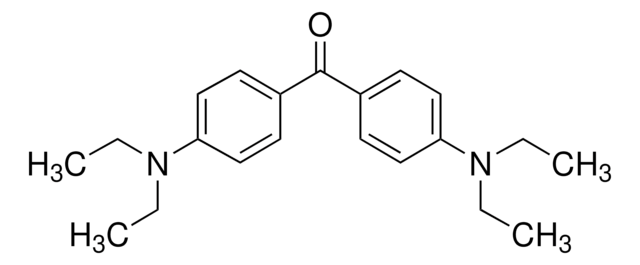About This Item
Recommended Products
Quality Level
assay
99%
bp
326 °C (lit.)
mp
56.5-57 °C (lit.)
SMILES string
Cc1ccc(cc1)C(=O)c2ccccc2
InChI
1S/C14H12O/c1-11-7-9-13(10-8-11)14(15)12-5-3-2-4-6-12/h2-10H,1H3
InChI key
WXPWZZHELZEVPO-UHFFFAOYSA-N
Looking for similar products? Visit Product Comparison Guide
Related Categories
Application
- Growth of 4-methylbenzophenone (4MB) single crystals by Czochralski method and its structural, mechanical and optical characterization: This study discusses the successful growth of 4-methylbenzophenone crystals and their properties, advancing materials science applications (Ramachandran et al., 2018).
- Synthesis and characteristics of photopolymerized benzophenone: The synthesis of 4-methylbenzophenone acrylate for low migration applications in polymers was explored, suggesting its utility in safer material design (Tang et al., 2017).
signalword
Warning
hcodes
Hazard Classifications
Aquatic Chronic 2 - STOT RE 2 Oral
Storage Class
11 - Combustible Solids
wgk_germany
WGK 3
flash_point_f
Not applicable
flash_point_c
Not applicable
ppe
Eyeshields, Gloves, type N95 (US)
Certificates of Analysis (COA)
Search for Certificates of Analysis (COA) by entering the products Lot/Batch Number. Lot and Batch Numbers can be found on a product’s label following the words ‘Lot’ or ‘Batch’.
Already Own This Product?
Find documentation for the products that you have recently purchased in the Document Library.
Customers Also Viewed
Our team of scientists has experience in all areas of research including Life Science, Material Science, Chemical Synthesis, Chromatography, Analytical and many others.
Contact Technical Service